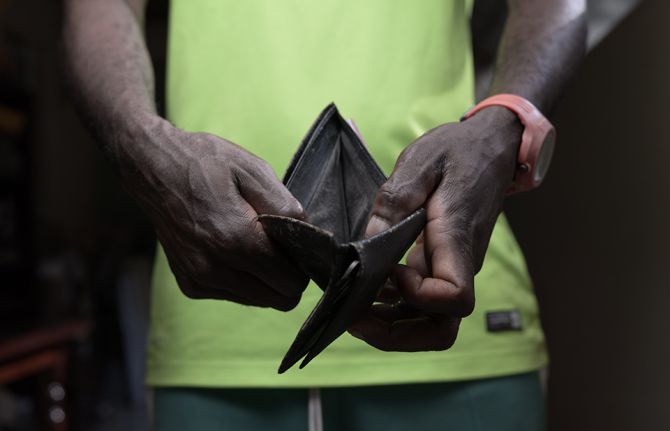

Feature Story
Building country-led sustainable HIV responses
20 December 2024
20 December 2024 20 December 2024What does the HIV response look like beyond the 2030 targets to end AIDS? For the past year, UNAIDS has been working with partners and over 30 countries to develop country-led roadmaps for the sustainability of HIV prevention, treatment and care services far into the future.
Part of the sustainability journey includes reaching the global goal of ending AIDS in the next five years. According to a recent World Bank report, despite an early COVID-19 spending peak, per capita government health spending has steadily declined in low- and lower middle-income countries. Urgent action is needed in many countries to ensure reaching the health Sustainable Development Goals remains possible by 2030.
UNAIDS’s new sustainability approach, developed jointly with the US President’s Emergency Plan for AIDS Relief (PEPFAR) and the Global Fund to Fight AIDS, Tuberculosis and Malaria (GF) in early 2024, focuses on five core areas. These are political leadership and commitment; enabling laws and policies; sustainable and equitable financing; science-driven, effective and high-impact HIV services and solutions; and systems built to deliver. The specific methods look different in each country, but all have equity and communities at the center.
“A multi-sectoral approach remains critical to the HIV response particularly in this last mile as we accelerate prevention and close gaps that require us to address the complex inequalities that persist,” said Anne Githuku-Shongwe at UNAIDS.
As part of this initiative, UNAIDS and partners are supporting countries to create and implement sustainability roadmaps. The roadmaps identify key changes countries can take to shift towards self-reliant, efficient and impactful HIV responses both in the short- and long-term.
Representatives from 22 countries in Sub-Saharan Africa and the Dominican Republic gathered recently in Johannesburg, South Africa to hone their roadmaps during a workshop hosted in October by The South African National AIDS Council in collaboration with UNAIDS, PEPFAR and the GF.
“While it is valuable that we come together to learn and share insights, it is crucial to recognize the level of responsibility each of us carries in our respective countries. We are not here simply to exchange ideas, but to take on a leadership role in driving meaningful change,” said Thembisile Xulu of the South African National AIDS Council as she addressed the participants.
During the workshop, countries shared experiences and learned from each other about their individual sustainability journeys. In addition, countries agreed to establish a virtual peer learning network to facilitate future cross-border partnerships and share successes and challenges in moving towards sustainability. Some of the findings so far along the journey include the necessity of high-level political support, coordinated multi-sectoral efforts and diversified funding sources.
Furthermore, countries recommended that development partners craft consistent messages about their ongoing commitment levels to fund HIV and health services. The need for transparent, responsible and inclusive conversations was emphasized by all in Johannesburg when discussing the transition from donor financed to country financed responses.
“The fiscal space for HIV is tightening, and we need to be pragmatic as we work to sustain the response with a focus on simplification and efficiency,” said Sarah Dominis from the U.S. State Department Bureau of Global Health Security and Diplomacy, Office of Financial and Programmatic Stability. “The future HIV response will be led by country governments in partnership with community and private sector partners. PEPFAR is not going away but will focus on supporting countries to sustain the HIV response, aligning to the vision they have committed to in their roadmaps.”
As the roadmaps roll out publicly, governments are recognizing the role of communities in the long-term response. For example, Tanzania’s roadmap identifies that community-led organizations play a pivotal role in community mobilisation, facilitating social and behaviour change, addressing social/cultural norms, primary HIV prevention interventions, adherence to antiretroviral treatment and retention in care. As a result, the roadmap lists actions to bolster communities, such as scaling up the network of community health workers and reinforcing community-led monitoring programs.
“When we talk about HIV sustainability we need to go back to the basics. It's about planning around the lives of PLHIV. Communities are always at the centre of service delivery, demand creation and monitoring. There is the opportunity for us all to tap into the infrastructure and willingness of communities to provide treatment and prevention services - through strong sustainable partnerships,” said Sibongile Nkosi from The Global Network of People Living with HIV.
This past World AIDS Day, ten countries launched their sustainability roadmaps, and more will follow in early 2025. To follow the process, visit: https://sustainability.unaids.org/



